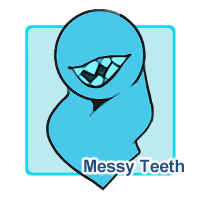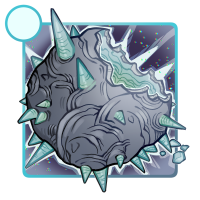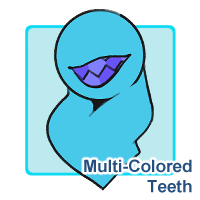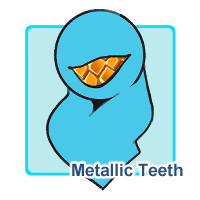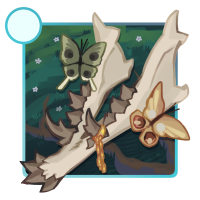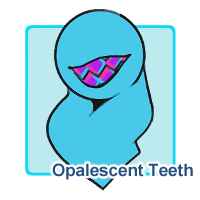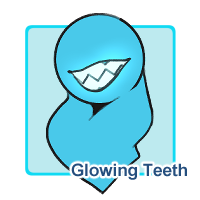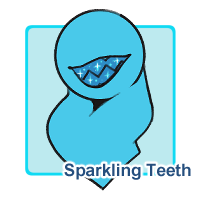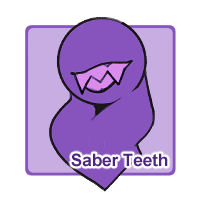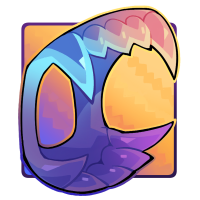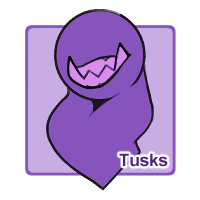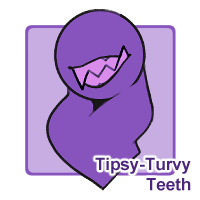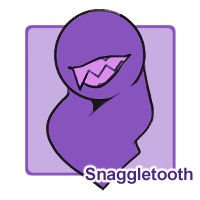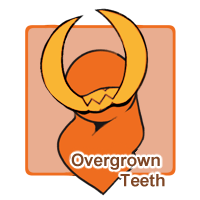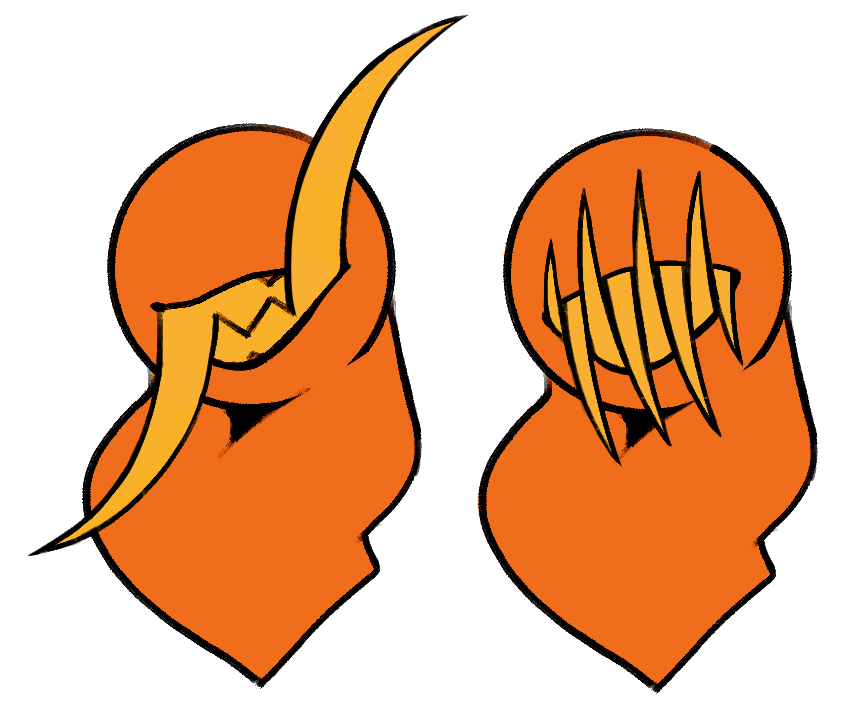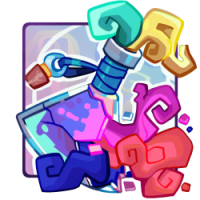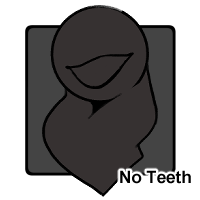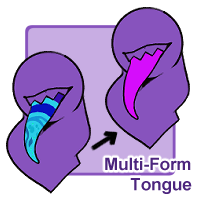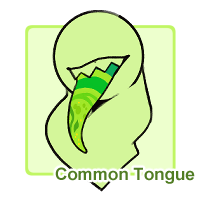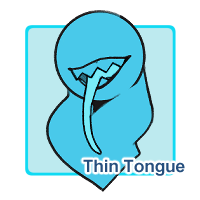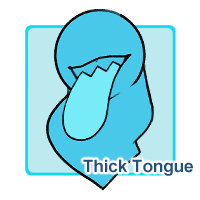Traits
[ Click here for Visual Sorter! ]
Messy Teeth (Uncommon)
[Teeth that overlap, slant or turn at an odd angle]
- Teeth can vary minorly in size, shape
- Teeth can overlap somewhat, slant, or point at different angles
- Teeth should be pointed
- Teeth should not mimic Fangs, Sabers, or Tusks
Can be applied by:
Multi-Colored Teeth (Uncommon)
[Teeth with more than one color present]
- Teeth can have markings, gradients, or be different colors per tooth
- Teeth color should not mimic teeth marking traits, such as Metallic, Opalescent, Glowing, or Sparkling teeth.
Metallic Teeth (Uncommon)
[Teeth that have a metallic and shiny sheen]
- May affect all teeth or specific teeth
Can be applied by:
Opalescent Teeth (Uncommon)
[Teeth that reflect multiple hues, considered opalescent or multi-chrome]
- May affect all teeth or specific teeth
Can be applied by:
Glowing Teeth (Uncommon)
[Teeth that glow and emit light]
- May affect all teeth or specific teeth
- Must share hue with the base color of the teeth
Can be applied by:
Sparkling Teeth (Uncommon)
[Teeth that sparkle and reflect light akin to glitter]
- May affect all teeth or specific teeth
- Must share hue with the base color of the teeth
Can be applied by:
Saber Teeth (CCCats) (Rare)
[Two large upper-mouth teeth, externally visible, or fangs that do not extend from the mouth]
- Can be long sabers or shorter fangs that do not extend from the mouth
- This trait can be stacked to allow for multiple sets of Sabers
Can be applied by:
Tusks (CCCats) (Rare)
[Two large lower-mouth teeth, externally visible]
- Can be long tusks or shorter fangs that do not extend from the mouth
- This trait can be stacked to allow for multiple sets of Tusks
Can be applied by:
Tipsy-Turvy Teeth (CCCats) (Rare)
[Two large teeth, one placed on the lower jaw and one placed on the upper jaw in opposite spots of the mouth]
- Can be long teeth or shorter fangs that do not extend from the mouth
- Must be opposite from one another to some extent, cannot directly overlap
- This trait can be stacked to allow for multiple sets of Tipsy Turvy Teeth
- Does not require the use of Saber Teeth or Tusks alongisde, but may be combined with them
Can be applied by:
Snaggletooth (CCCats) (Rare)
[One tooth that is larger than the others or protrudes from the mouth]
- Can be a long tooth or shorter fang that does not extend from the mouth
- Counts for one larger Saber, Tusk, or Fang
- Does not stack, as stacking would turn this trait into Saber, Tusks, or Tipsy-Turvy Teeth
Can be applied by:
Overgrown Teeth (CCCats) (Myth)
[Teeth that are very clearly larger than are proportional to the character]
- Includes "Needle" Teeth, meaning that all teeth are overgrown. Usually this leads to the mouth being unable to fully close
- This trait does not require Saber Teeth, Tusks, Tipsy-Turvy Teeth, or Snaggletooth, and the trait can effect only certain teeth.
Can be applied by:
Extra Rows of Teeth (CCCats) (Myth)
[Extra rows of teeth, shown as full rows behind the front row]
- Rows of teeth should be placed behind the main row
- Teeth traits can apply
- Different rows can have different traits, but must have all traits listed
- Up to two additional rows can be added
Human Teeth (CCCats) (Lore Breaking)
[This signifies that a CCCat took a human host. These beings are hunted by humans and are seen as truce-breakers]
- This trait does not need to be updated to in-lore standards if a design possesses it
- Can affect some or all of the teeth
No Teeth (Lore Breaking)
[The CCCat has no teeth or is missing a teeth reference]
- This trait cannot be used and must be updated if redesigned
Multi-Form Tongue (Rare)
[The tongue changes between each new form of the CCCat. Any new tongue traits added must be counted additionally, but the tongue can switch color and pattern between forms using this trait. ]
- This trait is only applicable when a design has Multiple Forms. If the design has more than one additional form, only once instance of this trait is needed.
- Each tongue is attached to a form, and changes when the forms change.
- Traits may differ between each tongue, but require the additional traits present. If the tongues share a trait, only one instance of that trait is needed
- Tongue does not change unless the form changes.
- Tongue is not an additional or different tongue, but is the base tongue changing form.
- CCCATS - A CCCat’s tongue must be above 43% saturation and value to be considered a living tongue. Please provide a flat and unshaded eye reference when submitting a MYO or Redesign (MYO and Redesign Guide)
Common Tongue (CCCats) (Common)
[This includes all Common Traits for CCCat Tongues. They do NOT need to be listed at all when uploading a design, and are strictly informational. You may use as many as you’d like while designing a MYO]
- Patterned Tongue - [tongue has a visible marking or pattern on it. Pattern can be striped, spotted, or a variety/mixture of other patterns]
- Bumpy Tongue - [Small, bumpy textures on the tongue]
- Saturated/Living Tongue - [Tongue is bright and saturated, implying a living CCCat. Standard tongue cannot dip below 43% Saturation and Value on an HSV/B scale (MYO and Redesign Guide). Please submit a flat and unshaded tongue reference when submitting a MYO or Redesign]
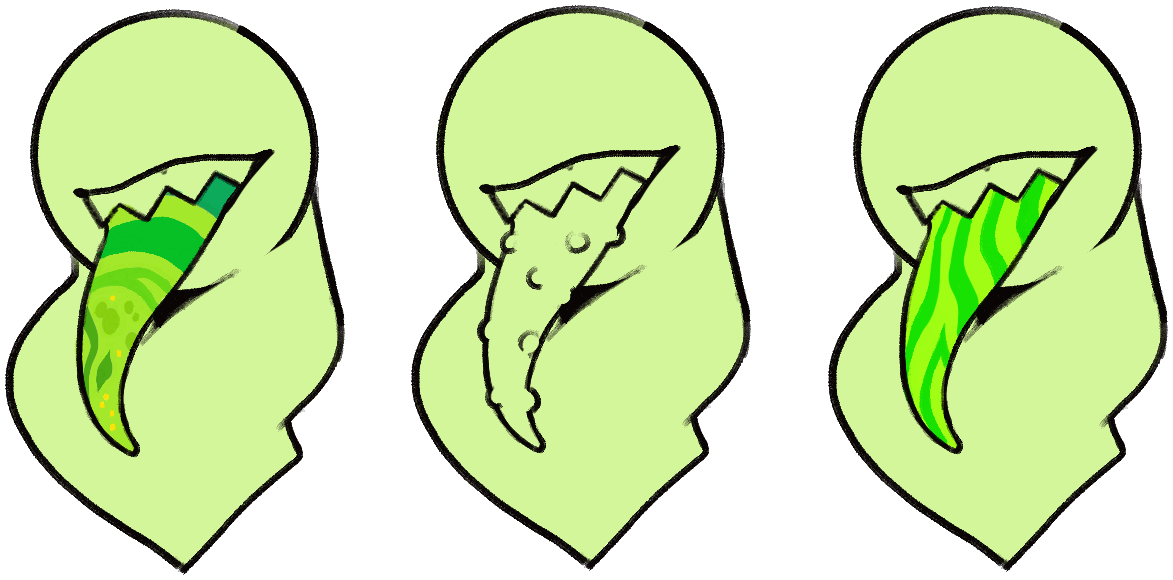
Thin Tongue (CCCats) (Uncommon)
[Thin tongue akin to a hummingbird's]
- Width should remain thin across the entire tongue. Minor taper may appear
- CCCATS - A CCCat’s tongue must be above 43% saturation and value to be considered a living tongue. Please provide a flat and unshaded tongue reference when submitting a MYO or Redesign (MYO and Redesign Guide)
Can be applied by:
Thick Tongue (CCCats) (Uncommon)
[A tongue that is wide with little to no taper]
- Width should remain thick across the entire tongue
- End of tongue should be wide and rounded
- CCCATS - A CCCat’s tongue must be above 43% saturation and value to be considered a living tongue. Please provide a flat and unshaded tongue reference when submitting a MYO or Redesign (MYO and Redesign Guide)
